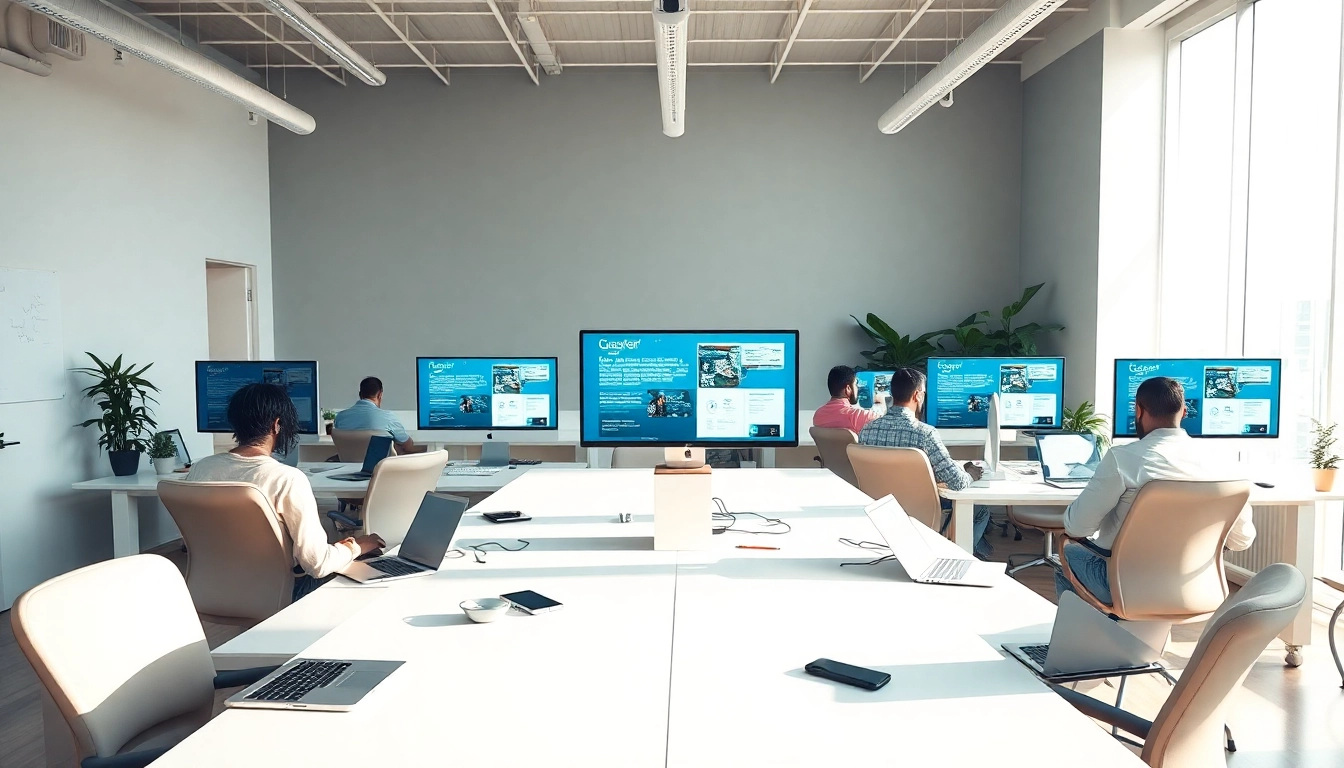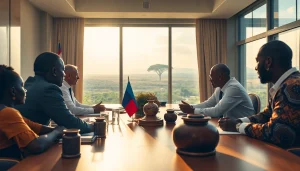Crafting Innovative Web Design Missouri for Businesses of All Sizes
Understanding Web Design Missouri and Its Importance
In today’s digital landscape, an effective web presence is crucial for businesses of all sizes. As the online marketplace continues to grow, understanding the nuances of web design missouri becomes increasingly important for local businesses aiming to attract and retain customers. This comprehensive guide will explore the significance of localized web design, dive into the current trends shaping the industry, and outline essential practices for creating impactful online experiences.
Definition of Web Design Missouri
Web design Missouri refers to the process of creating and configuring websites specifically for the Missouri market, considering the local audience’s preferences, habits, and cultural nuances. This type of design goes beyond mere aesthetics; it integrates strategic elements aimed at enhancing user engagement and driving conversions. It includes aspects such as layout, color scheme, typography, images, and overall functionality tailored to meet the unique needs of Missouri businesses and their customers.
Why Localized Web Design Matters
Localized web design takes into account the specific characteristics and demographics of Missouri’s market. By incorporating local preferences and considering regional trends, businesses can create resonant connections with their audience. This localized approach can lead to several advantages:
- Enhanced Relevance: When a website reflects local culture, it fosters a sense of familiarity and trust among users.
- Improved SEO: Localized content can boost search engine rankings, particularly for region-specific queries.
- Competitive Edge: In a saturated marketplace, understanding local needs allows a business to stand out from its competitors.
Trends in Web Design Missouri
The web design industry is constantly evolving, influenced by technological advancements and shifting user behaviors. Here are some key trends currently impacting web design missouri:
- Mobile-First Design: As more users access websites via smartphones, responsive and mobile-first designs have become essential.
- Minimalism: Simplified design aesthetics prioritize content, making it easier for users to navigate.
- Video Integration: Utilizing video as a primary communication tool can significantly enhance user engagement and storytelling.
- Inclusive Design: Consideration for accessibility is becoming a standard practice to ensure that websites serve all users, including those with disabilities.
Key Elements of Effective Web Design Missouri
User Experience (UX) Principles
User experience (UX) is at the heart of successful web design. Effective UX design ensures that visitors find what they need quickly and enjoy interacting with the site. Key principles include:
- Intuitive Navigation: A clear and logical navigation structure helps users find information with ease.
- Fast Load Times: Websites should load quickly to prevent user frustration and increase retention.
- Engaging Visuals: High-quality images and videos can capture attention while also enhancing storytelling.
Responsive Design Techniques
Responsive design refers to a website’s ability to adapt its layout and content according to the screen size and device type. Techniques that ensure effective responsive design include:
- Fluid Grid Layouts: Utilizing percentages for widths rather than fixed pixel values allows components to adjust seamlessly.
- Flexible Images and Media: Images should be set to scale with the browser dimensions, maintaining aspect ratios without loss of quality.
- CSS Media Queries: Media queries can modify styles based on characteristics of the device, such as screen size or resolution.
SEO Best Practices for Web Design Missouri
Integrating search engine optimization (SEO) into web design is vital for enhancing visibility and drawing organic traffic. Important SEO best practices include:
- Keyword Optimization: Research and use localized keywords effectively throughout the website, including in headings, meta descriptions, and alt texts.
- Quality Content: Providing valuable content that meets user intent can improve dwell time and lower bounce rates.
- Site Structure: A well-organized site structure with clear URLs and sitemap can facilitate better indexing by search engines.
Choosing the Right Web Design Approach for Your Business
Custom vs. Template Websites
When embarking on a web design project, businesses typically face a choice between custom and template websites:
- Custom Websites: These are built from scratch to meet specific requirements. They offer greater flexibility, unique branding, and tailored functionalities.
- Template Websites: These are pre-designed layouts that businesses can customize. They are generally quicker and less expensive to implement, making them suitable for startups or small businesses with limited budgets.
Considering Budget and Resources
Budget constraints can significantly influence web design decisions. Businesses should assess their financial capacities to determine what type of web design fits best. This includes evaluating costs for:
- Design and development
- Domain registration and hosting
- Ongoing maintenance and updates
- SEO and content creation
Evaluating Long-term Needs
Businesses should consider their long-term vision when selecting a web design approach. Questions to address include:
- How will your website evolve as your business grows?
- Do you need to integrate additional functionalities in the future?
- What importance does scalability hold for your operations?
Common Challenges in Web Design Missouri
Balancing Aesthetics with Functionality
One of the most common challenges faced in web design is achieving a balance between aesthetic appeal and functional usability. While it’s crucial for a website to be visually appealing, it should not come at the expense of performance and user experience. Prioritizing both elements can enhance satisfaction and engagement.
Keeping Up with Technological Changes
The web design landscape is constantly changing, and staying current with emerging technologies and design philosophies is essential. Failure to adapt can result in outdated designs that fail to meet modern user expectations and functionality standards. Regular training, industry research, and networking with peers can aid designers in staying ahead.
Understanding Client Expectations
Clear communication is vital in any design project. Understanding and managing client expectations helps avoid misunderstandings and ensures that the final product aligns with their vision. Setting realistic timelines, providing regular updates, and maintaining openness about potential limitations can foster a positive working relationship.
Measuring Success in Web Design Missouri Projects
Key Performance Indicators (KPIs) for Web Design
To gauge the success of web design initiatives, businesses should identify and evaluate key performance indicators (KPIs) that align with their goals. Important KPIs to consider include:
- Traffic Metrics: Analyzing visitor traffic to understand patterns and growth over time.
- Conversion Rates: Tracking how effectively the website turns visitors into customers.
- User Engagement: Monitoring metrics such as average session duration and bounce rates to assess user interaction.
Client Feedback and Iteration
Feedback from clients and users is invaluable for continuous improvement. Encouraging client input during the development process helps ensure the site aligns with their objectives. Post-launch feedback can provide insights into usability and overall effectiveness, facilitating necessary adjustments and enhancements.
Case Studies of Successful Web Design Missouri
Examining successful case studies can provide real-world examples of effective web design strategies in Missouri. Each case study typically illustrates how specific objectives were met, challenges were navigated, and outcomes were achieved. Documenting these case studies can serve as a beneficial reference for other businesses seeking to optimize their web presence.














Post Comment